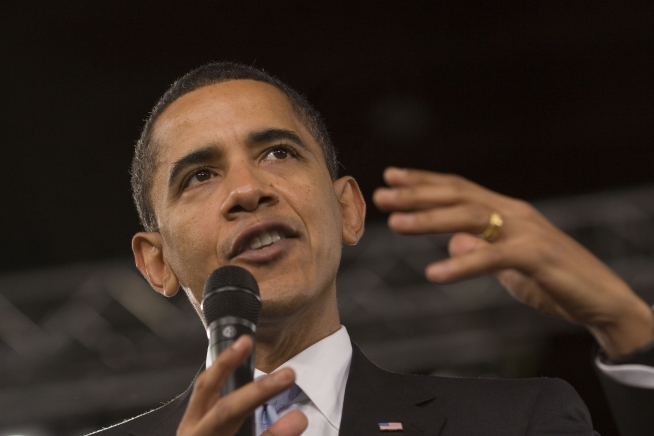Report: ACA Places a Special Burden on Hawai‘i

President Barack Obama’s legislative legacy is changing the nature of healthcare in America. White House image.
Hawai‘i’s health insurance premiums for small businesses have risen an average of 7% annually since 2003, according to “The Challenges Facing Hawaii 40 Years After the Prepaid Health Care Act (PHCA),” a study conducted by Hawaii Health Information Corporation, a healthcare data collector and analyzer.
Passed in 1974, the state’s PHCA has contributed to one of the lowest uninsured rates as well as the lowest and slowest growing health insurance premiums in the nation, the report says. But the cost of healthcare—physician, hospital and insurance services, prescription drugs, equipment and supplies—is steadily increasing.
Affordable Care Act is Impacting Rising Costs
On top of increasing healthcare costs, premiums are expected to increase further as a result of various Affordable Care Act-related fees. For example, HMSA’s fees in 2014 totaled $65.4 million. The fees were passed directly on to consumers—as was done across the country. Four out of nine percent of HMSA’s premium increases for small business were attributed to ACA-related fees in 2014.
The most significant ACA-related fee is the insurance provider fee imposed on all insurers to subsidize health insurance for eligible individuals who purchase a plan on a health exchange. In implementation year 2014, $8 billion was collected nationwide. Nearly 60 percent of HMSA’s 2014 ACA-related fees—$39 million—represented the insurance provider fee.
The insurance provider fee is permanent and expected to increase two to three percent per year to cover the subsidies for health care premiums. The fee is projected to reach $14.3 billion in 2018.
The second fee helps finance the Patient-Centered Outcomes Research Institute. Initially set at $1 per insured person during Fiscal Year 2013, the fee increased to $2 per insured person on all plans during Fiscal Year 2014.
Going forward, the fee will be adjusted based on the US average rate of healthcare inflation, which was nearly three percent per year from 2010 to 2013.
Since the ACA prohibits denying individuals health insurance based on pre-existing conditions, the third fee involves subsidizing high-risk enrollees through the transitional reinsurance and risk-adjustment programs. Scheduled to last only three years, the transitional reinsurance program collected and distributed $10 billion in 2014 (translates to a $63 fee per covered life); $6 billion is anticipated in 2015 and $4 billion in 2016. The risk adjustment program is permanent; insurers with lower-risk enrollees will pay insurers with higher risk enrollees within the same state.
The final fee is a sustainability fee to finance health insurance exchanges since federal funds have been exhausted. By the end of 2014, Hawai‘i imposed a 2% sustainability fee on premiums purchased that year on the then state-run exchange. Since Hawai‘i no longer has a state-based exchange, sustainability fees collected will go to funding the federal marketplace, HealthCare.gov.
The employee-employer cost share structure laid out in the PHCA, rising healthcare costs and in recent years, these ACA-related fees, have led to employers in the state paying an increase of more than 3,000% to cover their portion of employer-based healthcare coverage since 1974.
“The Affordable Care Act, while a real advance for the rest of the country, is placing a special burden upon Hawai‘i, which has already achieved much of what the ACA has set as health goals for the nation,” said Peter Sybinsky, CEO of HHIC. “These burdens—payment reductions, high insurance taxes, additional health benefits—all make it more difficult to maintain the historical commitment to universal coverage that has made Hawai‘i a leader in health reform. As a community, we need to work together to respond appropriately to this major challenge.”
About Hawaii Health Information Corporation
Established in 1994, HHIC maintains one of the largest comprehensive healthcare databases in the state, comprised of local and national inpatient, emergency department and financial data. The research and data compiled are analyzed and disseminated statewide and are used to help shape healthcare policy and educate decision makers, healthcare providers and industry experts. Through Insight Reports, HHIC seeks to inform the public about important healthcare topics.
For more information, visit www.hhic.org.
“The Challenges Facing Hawaii 40 Years After the PHCA,” can be downloaded here.
Its companion study, “Hawaii’s PHCA 40 Years Later,” can be downloaded here.









